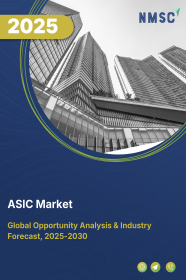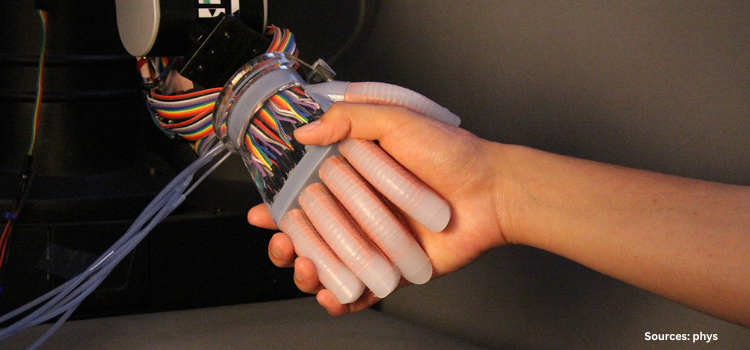Russia Eye Tracking Market by Type (Head Mounted Eye Tracker and Remote Eye Tracker), by Component (Hardware and Software), by Application (Assistive Communication, Academic Research, Consumer Behavior Research, Usability Testing and Other Applications), and by End-User Industry (Retail, Automotive, Healthcare, Government and Others)- Opportunity Analysis and Industry Forecast, 2024– 2030
Industry: Semiconductor & Electronics | Publish Date: 06-Jan-2025 | No of Pages: 143 | No. of Tables: 108 | No. of Figures: 53 | Format: PDF | Report Code : SE2466
US Tariff Impact on Russia Eye Tracking Market
Trump Tariffs Are Reshaping Global Business
Russia Eye Tracking Market Overview
The Russia Eye Tracking Market size was valued at USD 18.6 million in 2023, and is predicted to reach USD 108.9 million by 2030, at a CAGR of 27.5% from 2024 to 2030. The eye tracking market is a comprehensive ecosystem of products, services, and technologies designed to measure and analyze eye movements, gaze direction, and fixation points. This market includes specialized hardware such as cameras, sensors, and light sources, as well as software solutions for data processing and analysis.
Eye tracking also known as eye monitoring systems are applied across various industries such as psychology, market research, user experience testing, and human-computer interaction to provide insights into consumer behavior, visual perception, and interface usability.
In the contemporary landscape of user experience and human-computer interaction, eye monitoring systems emerges as an indispensable tool, offering invaluable insights into user engagement and interface usability.
Growth in R&D Initiatives Enhances Eye-Tracking Technology Adoption across Industries in Russia
Educational institutes and research centers in Russia are increasingly focusing on research and development programs in eye-tracking technology, thereby driving its adoption across multiple industries such as automotive and healthcare.
For instance, collaborative efforts by researchers from Novosibirsk State University, Saint Petersburg State University, and St. Petersburg Federal Research Center, who developed the Operator EYEVP dataset for fatigue detection based on eye movements, heart rate data, and video information.
Utilizing this dataset, a machine learning model was developed to detect fatigue in real-time, achieving an impressive accuracy of 92.5%. Such advancements not only hold promise for enhancing road safety but also underscore Russia's growing role in advancing eye-tracking technologies through innovative research initiatives.
Integration of Eye-Tracking Technology Military Boosts the Russia Eye Tracking Market Growth
The Russian military embraced advanced eye-tracking technology by integrating specialized glasses to actively monitor and address soldier fatigue in real-world field scenarios, offering precise detection of early signs of fatigue among military personnel.
By continuously monitoring eye movements, the technology alerts the potential risks associated with fatigue, enabling timely interventions to mitigates the risks of accidents and optimizing mission readiness and performance.
Furthermore, the integration of eye tracking market underscores Russia's commitment to leveraging cutting-edge innovations for military applications, showcasing advancements in enhancing soldier welfare and operational efficiency in dynamic field environments.
Proliferation of Alternative Technologies Hinders the Russia Eye Tracking Market Expansion
The Russia eye tracking market expansion is significantly restrained by the proliferation of alternative technologies such as gesture recognition, unimodal methods, and multimodal activity recognition. The availability and adoption of these alternatives limit the market's growth potential by providing competitive solutions that meet diverse user needs and preferences.
Integration of AR and VR in Eye Tracking Technology Create Future Market Prospects
The swift integration of eye monitoring systems across various sectors, including augmented reality (AR), virtual reality (VR), lie-detection systems, and cognitive testing, is poised to unlock significant opportunities within the Russia eye tracking market growth.
This technology plays a crucial role in enhancing image clarity and reducing eye strain in AR and VR applications, thereby elevating user engagement and comfort levels. This technology benefits from natural stimuli and controlled data collection, making it a dynamic field driven by startups and investments from tech giants such as Apple, Google, Facebook, and Samsung.
For instance, in March 2022, Mojo Vision announced a new advanced prototype of its AR smart contact lens Mojo Lens. The prototype includes various new hardware features and advanced technologies such as advanced display, communications, eye tracking technology, and a power system embedded into the lens. It allows users to access timely information quickly and discreetly without forcing them to look down at a screen.
Competitive Landscape
The key market players operating in the Russia eye tracking industry include Tobii AB, Smart Eye AB, Lattice Semiconductor Corp, Ogilvy, Seeing Machines Limited, AVSimulation, Lumen, Eyetech Digital Systems, Inc., EyeTracking, Gazepoint, Eyegaze, Eyeware Tech, SR Research Ltd., Pupil Labs, and Irisbond Crowdbonding, S.L. and others.
Russia Eye Tracking Market Key Segments
By Type
-
Head Mounted Eye Tracker
-
Remote Eye Tracker
By Component
-
Hardware
-
Software
By Application
-
Assistive Communication
-
Academic Research
-
Consumer Behavior Research
-
Usability Testing
-
Other Applications
By End-User Industry
-
Retail
-
Automotive
-
Healthcare
-
Government
-
Others
REPORT SCOPE AND SEGMENTATION:
|
Parameters |
Details |
|
Market Size in 2023 |
USD 18.6 Million |
|
Revenue Forecast in 2030 |
USD 108.9 Million |
|
Growth Rate |
CAGR of 27.5% from 2024 to 2030 |
|
Analysis Period |
2023–2030 |
|
Base Year Considered |
2023 |
|
Forecast Period |
2024–2030 |
|
Market Size Estimation |
Million (USD) |
|
Growth Factors |
|
|
Companies Profiled |
15 |
|
Market Share |
Available for 10 companies |
|
Customization Scope |
|
|
Pricing and Purchase Options |
Avail customized purchase options to meet your exact research needs. |
|
Customization Scope |
Free customization (equivalent up to 80 working hours of analysts) after purchase. Addition or alteration to country, regional, and segment scope. |
|
Pricing and Purchase Options |
Avail customized purchase options to meet your exact research needs. |
KEY PLAYERS
-
Tobii AB
-
Smart Eye AB
-
Lattice Semiconductor Corp
-
Ogilvy
-
Seeing Machines Limited
-
AVSimulation
-
Lumen
-
Eyetech Digital Systems, Inc.
-
EyeTracking
-
Gazepoint
-
Eyegaze
-
Eyeware Tech
-
SR Research Ltd.
-
Pupil Labs
-
Irisbond Crowdbonding, S.L.














 Speak to Our Analyst
Speak to Our Analyst




















